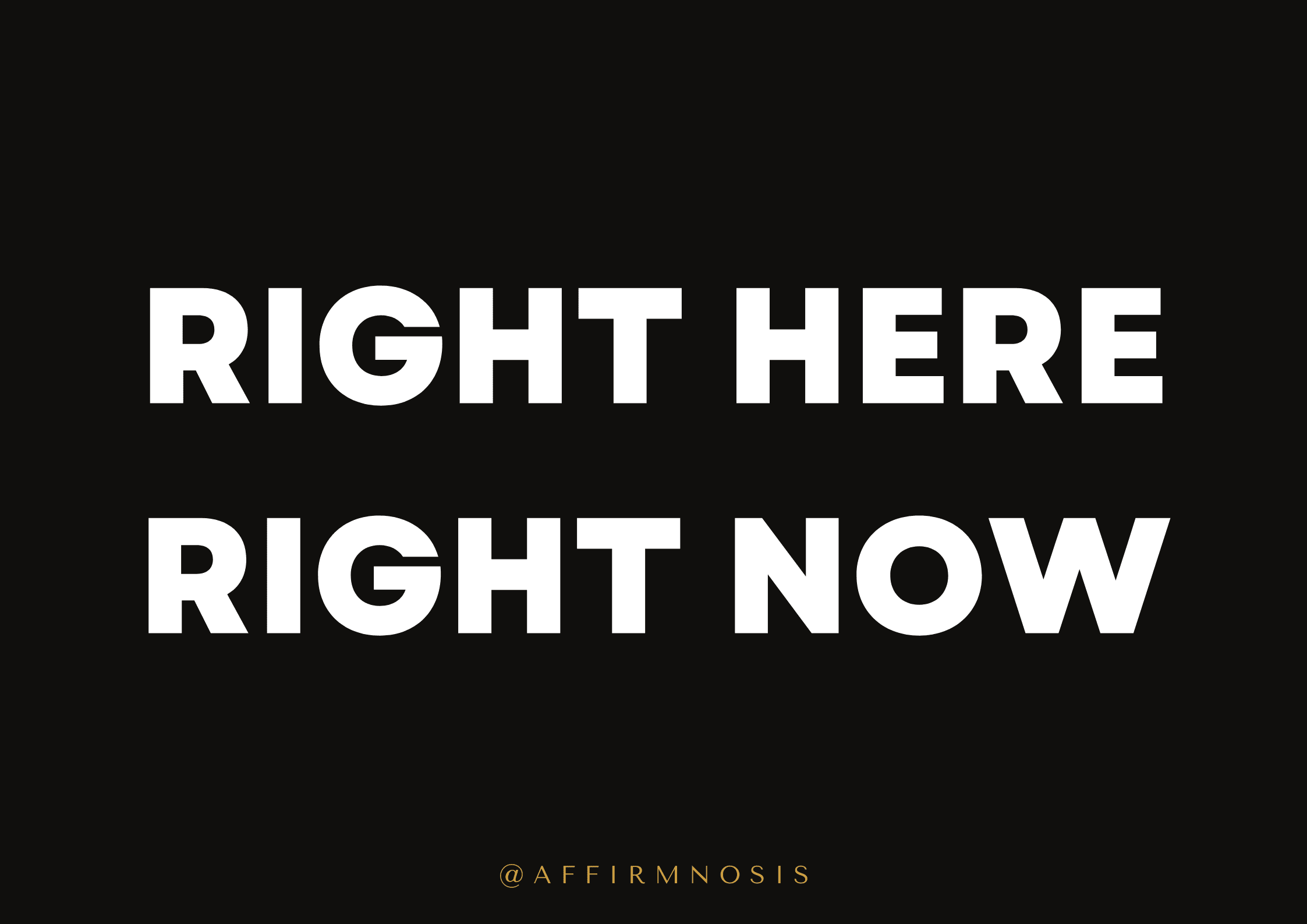Imagine waking up every day feeling like you’re stuck on autopilot. That’s how Sarah, a marketing manager from Chicago, described her life before discovering the power of her hidden mental patterns. Despite her success, stress and exhaustion followed her like shadows. Then, a friend suggested she explore how her deeper mindset operated. Within weeks, Sarah began reshaping her habits—and her life transformed.
This story isn’t unique. Science reveals that 95% of our decisions and emotions stem from automatic processes below conscious awareness. These patterns—formed over years—can trap us in cycles of burnout or self-doubt. But what if you could rewire them intentionally?
This article shares three actionable methods backed by neuroscience and real-world results. You’ll learn how to identify limiting beliefs, create new neural pathways, and align your daily actions with lasting change. Each strategy bridges theory with practice, giving you tools to unlock resilience and clarity.
Ready to take control? Let’s dive into the first step—understanding how your mind’s hidden engine shapes your reality.
Key Takeaways
- Automatic mental processes drive most daily decisions and emotions.
- Neuroscience supports intentional rewiring of deeply held patterns.
- Three practical methods combine science with real-world application.
- Breaking cycles of stress starts with awareness and targeted action.
- Personal growth requires aligning mindset shifts with daily habits.
Understanding the Subconscious Mind
Consider your daily commute—the turns you take without thinking, the coffee you brew mechanically. Neuroscientists estimate 95% of daily decisions—from breathing patterns to emotional reactions—originate in the mind’s hidden layers. This autopilot system operates silently, shaping routines and responses before conscious thought engages.

What Lies Beneath Awareness
The conscious mind handles logic and short-term tasks, like solving a math problem. Meanwhile, the subconscious stores memories, beliefs, and habits formed through repetition. Think of it as a vast library running background processes—managing heartbeat, muscle memory, and ingrained reactions.
| Feature | Conscious Mind | Subconscious Mind |
|---|---|---|
| Processing Capacity | 5% (limited focus) | 95% (automatic functions) |
| Speed | Slow, deliberate | Instantaneous |
| Energy Use | High effort | Efficient |
Silent Director of Daily Choices
Ever reflexively check emails during a meeting? That’s subconscious programming at work. Repeated actions—like reaching for snacks when stressed—become neural shortcuts. Hidden beliefs also steer emotions: Someone fearing failure might avoid promotions despite qualifications.
Recognizing these patterns is the first step to unlocking your potential. By mapping how mental autopilot operates, you gain power to redirect its course—paving the way for intentional growth.
The Science Behind Neuroplasticity and Mental Rewiring
Your brain isn’t fixed in stone—it’s more like clay waiting to be shaped. Neuroplasticity reveals how neural networks reorganize through experience. This groundbreaking discovery overturned old beliefs that adult brains couldn’t change meaningfully.

Understanding Brain Plasticity
Think of your neurons as city roads. Frequently used paths widen into highways—like learning a language. Unused routes fade through “synaptic pruning.” A 2020 Harvard study found taxi drivers develop larger hippocampi as they memorize streets, proving repeated mental activity reshapes structures.
Three key stages drive this process:
- Activation: New thoughts spark electrical impulses
- Connection: Repeated patterns strengthen neural bonds
- Integration: Pathways become automatic responses
Neuroscientist Dr. Lara Boyd explains:
“Every skill you practice literally changes your brain’s wiring. What fires together, wires together—this isn’t metaphor, but measurable biology.”
| Brain Activity | Before Training | After 8 Weeks |
|---|---|---|
| Gray Matter Density | Baseline | +5.7% (Prefrontal Cortex) |
| Neural Connections | Scattered | Organized Clusters |
| Response Speed | 0.8 sec | 0.3 sec |
This science empowers real change. When you consciously direct attention, you steer the brain’s remodeling process. Whether overcoming fears or building confidence, your mental workouts forge durable pathways. The upcoming methods leverage this biological truth—proving transformation isn’t wishful thinking, but a trainable skill.
Recognizing Limiting Beliefs and Their Impact
Ever hesitated before sharing an idea at work or doubted your ability to learn a new skill? These moments often trace back to limiting beliefs—deeply rooted assumptions that shape how we interpret challenges. Like invisible chains, they quietly steer decisions and opportunities.

Common Negative Thought Patterns
Limiting beliefs act as mental filters, distorting reality to match outdated narratives. For example:
- “I’ll never be promoted” (despite strong performance reviews)
- “Money always causes problems” (leading to financial avoidance)
- “I’m too old to change careers” (ignoring transferable skills)
A 2023 Gallup study found employees with persistent self-doubt took 37% longer to complete tasks. Workplace dynamics often magnify these patterns—55% of managers report team members holding back ideas due to fear of criticism.
“The beliefs we don’t question become the boundaries we accept,” notes organizational psychologist Dr. Elena Torres. “Awareness turns whispers of doubt into data points for growth.”
| Belief Type | Common Phrase | Impact |
|---|---|---|
| Self-Worth | “I don’t deserve this” | Avoids opportunities |
| Risk Aversion | “Better safe than sorry” | Stagnates innovation |
| Comparison | “Others are more capable” | Reduces initiative |
These mental frameworks don’t just affect confidence—they alter biology. Chronic stress from beliefs like “I must be perfect” elevates cortisol levels, creating fatigue cycles. The good news? Identifying these patterns creates space for new narratives. Later sections will explore practical tools to rewrite them.
Building Self-Awareness and Cultivating Inner Insight
Morning traffic jams aren’t just about honking horns—they’re mirrors reflecting our hidden stress responses. A 2023 APA study found 63% of adults experience daily stress spikes without understanding their root causes. This gap between reaction and awareness keeps many stuck in draining cycles.
Identifying Stress Triggers
Daily self-assessment acts like a mental X-ray. Notice when your breath quickens during work calls or your jaw tightens scrolling emails. These physical cues often point to deeper emotional patterns. For example:
- Racing thoughts before team meetings
- Midday fatigue after decision-heavy tasks
- Irritability when schedules overfill
Tracking these signals for one week reveals surprising connections. Research shows people who journal 3 minutes daily about stress patterns reduce cortisol levels by 18% within 21 days. Awareness creates space between stimulus and response—a critical window for change.
| Stress Signal | Common Trigger | Reframe Strategy |
|---|---|---|
| Shallow breathing | Tight deadlines | 90-second box breathing |
| Mental fog | Information overload | Priority triage system |
| Sleep disruption | Unresolved conflicts | Evening reflection ritual |
Mindfulness expert Dr. Rachel Kim observes:
“Your body whispers before it screams. Learning its language turns survival mode into growth mode.”
Simple practices like midday check-ins or evening gratitude lists build this skill overtime. As clarity grows, you’ll spot reactive patterns earlier—equipping you to apply transformative methods discussed next.
subconscious reprogramming techniques: A How-To Guide
What if your morning routine could reshape your entire day—and life? Research shows consistent mental practices create lasting neural shifts. This section breaks down two evidence-based approaches to foster positive change.
Visualization: Your Brain’s Architect Tool
Top athletes and CEOs use mental rehearsal to prime success. Here’s how to apply it:
- Set aside 7 minutes daily in a quiet space
- Close your eyes, visualize desired outcomes in vivid detail
- Engage all senses—imagine sounds, textures, emotions
- Repeat for 21 days to strengthen neural pathways
A 2022 UCLA study found this practice activates the visual cortex similarly to real experiences. Neuroscientist Dr. Mark Lee explains:
“Mental imagery builds ‘cognitive maps’ that guide real-world actions. It’s like installing new software in your biological hardware.”
Mindful Awareness in Action
Conscious presence rewires reactive patterns. Try this 3-step reset:
- Morning: 5 deep breaths before checking devices
- Midday: 90-second body scan during transitions
- Evening: Reflect on three positive interactions
| Practice | Brain Impact | Time Commitment |
|---|---|---|
| Focused Breathing | Calms amygdala | 2-5 minutes |
| Body Scans | Enhances interoception | 1-3 minutes |
| Gratitude Reflection | Boosts prefrontal activity | 3 minutes |
Consistency matters more than duration. Those who practice daily for six weeks show measurable gray matter growth in decision-making regions. Start small—even 60 seconds of intentional focus creates ripple effects.
Replacing Negative Thoughts with Positive Affirmations
The words we whisper to ourselves daily shape our reality more than we realize. A 2024 Stanford study found individuals who practiced intentional self-talk reduced anxiety symptoms by 42% within six weeks. This shift begins by catching harmful narratives—like “I always fail”—and consciously replacing them with growth-focused statements.
Steps to Shift Your Mindset
Start by tracking automatic thoughts for three days. Notice patterns like self-criticism during work challenges or defeatist language about goals. Mark, a teacher from Denver, discovered his “I’m not leadership material” belief stemmed from a childhood memory. By reframing it to “I grow into new roles with ease,” he earned a promotion within months.
- Identify: Pause when frustration arises—note the underlying thought
- Challenge: Ask: “Is this belief based on facts or fear?”
- Replace: Craft an affirmation addressing the core need
Crafting Effective Affirmations
Powerful statements share three traits: present tense, emotional resonance, and specificity. Compare:
| Ineffective | Impactful |
|---|---|
| “I hope to be confident” | “I trust my decisions fully” |
| “No more mistakes” | “I learn and adapt quickly” |
“Affirmations work best when they align with personal values,” explains behavioral scientist Dr. Alicia Tan. “The brain rejects generic phrases but embraces truths that feel authentically yours.”
Consistency turns these phrases into neural highways. Set phone reminders or pair affirmations with routine actions—like brushing teeth or waiting for coffee. Over time, this practice rebuilds self-trust, creating mental space for the visualization strategies discussed next.
Visualization for Success and Goal Setting
Olympic athletes don’t just train their bodies—they sculpt their victories mentally first. This practice extends beyond sports. Visualization bridges the gap between current reality and desired outcomes, activating the same brain regions used during real-world achievements.
Blueprint for Your Dreams
Vision boards transform abstract goals into tangible inspiration. Follow these steps:
- Collect images representing career milestones or personal growth
- Arrange them where you’ll see them daily—desktop backgrounds work well
- Add phrases like “Promotion secured” or “Healthy energy daily”
Marketing director Claire Reyes used this method while transitioning industries. Her board featured leadership quotes and industry icons. Within 14 months, she tripled her client portfolio.
Mental Rehearsal Routines
Consistent visualization builds neural pathways supporting success. Try this schedule:
| Time | Practice | Duration |
|---|---|---|
| Morning | Visualize completing key tasks | 3 minutes |
| Lunch | Imagine positive client interactions | 90 seconds |
| Evening | Review progress toward goals | 2 minutes |
Neuroscientist Dr. Ellen Park states:
“Daily mental simulations increase goal commitment by 33% compared to passive planning. The brain starts recognizing desired outcomes as achievable realities.”
Specificity drives results. Instead of “I want more money,” visualize signing a $10,000 contract. Track these mental exercises like gym workouts—consistency turns fleeting images into concrete achievements.
Setting Clear Goals and Intentions for Change
Did you know professionals with written goals are 42% more likely to achieve them? A Harvard Business study tracked graduates for a decade—those who defined clear objectives earned 10x more than peers with vague aspirations. Clarity isn’t just motivational fuel; it’s a neurological catalyst for progress.
From Fog to Focus
Vague desires like “get promoted” lack the specificity needed for real change. Contrast this with tech manager Lisa Chen’s approach: she mapped quarterly skill targets and mentorship milestones. Within 18 months, she transitioned from individual contributor to director—a 63% salary increase.
Effective goal alignment requires three steps:
- Audit current beliefs: Does “success” mean autonomy or recognition?
- Break annual aims into 90-day action plans
- Schedule weekly progress reviews
| Vague Goal | Clear Target | Action Step |
|---|---|---|
| “Improve leadership” | “Lead 3 cross-department projects by Q3” | Volunteer for task forces |
| “Earn more” | “Increase revenue by 15% through new clients” | Pitch 2 prospects weekly |
“Measurable targets activate the prefrontal cortex’s planning centers,” explains productivity researcher Dr. Ian Cole. “It’s why athletes track split times—what gets measured gets mastered.”
Try this exercise: Write five professional goals using SMART criteria. Then, list three daily actions that directly support each aim. This bridges intention with execution—turning mental blueprints into lived reality.
Practicing Mindfulness and Stress Management
Workplace stress costs U.S. businesses $300 billion annually in lost productivity. Mindfulness—the practice of staying present—helps professionals regain control amid chaos. By training attention, employees reduce burnout while boosting decision-making clarity.
Techniques for Mindful Breathing
Try the 4-7-8 method during meetings or deadlines:
- Inhale quietly for 4 seconds
- Hold breath for 7 seconds
- Exhale completely for 8 seconds
A 2023 Johns Hopkins study found this pattern lowers heart rates by 11% within two minutes. Financial analyst Mia Chen uses it before client presentations: “It stops my mind from racing—I respond instead of react.”
| Practice | Stress Reduction | Work Impact |
|---|---|---|
| Pre-Meeting Breathing | 27% lower cortisol | Sharper focus |
| Lunchtime Walks | 18% anxiety drop | Better teamwork |
| Evening Reflection | 23% sleep improvement | Faster problem-solving |
Benefits of Regular Meditation
Daily 10-minute sessions rewire neural networks controlling emotional regulation. MRI scans show meditators develop thicker prefrontal cortices—the brain’s command center for stress management.
“Mindfulness isn’t about emptying your mind. It’s about learning to surf life’s waves without drowning,” explains neuroscientist Dr. Priya Rao. Her research shows 8 weeks of practice reduces workplace conflict by 31%.
Small actions create big shifts. Set phone reminders to pause and breathe between tasks. Over time, these micro-moments build mental resilience—a skill that transforms careers and personal well-being.
Breaking Old Patterns with Daily Habits
Ever hit snooze three times before stumbling through your morning? That groggy autopilot reveals how daily routines silently shape behavior. Neuroscience confirms that repeated actions—like brushing teeth or checking emails—wire neural pathways through consistency. These micro-choices act as mental software updates, gradually overwriting outdated patterns.
Establishing a Routine
A 2021 MIT study found 40 consecutive days of consistent action create new neural highways. Start small: a 5-minute morning ritual of stretching or journaling. These day-anchored practices build momentum, like compound interest for your brain.
Three science-backed ways to reshape habits:
- Anchor new behaviors: Pair affirmations with coffee brewing
- Track progress visually: Use calendars to mark streaks
- Celebrate micro-wins: Note one positive change weekly
| Old Pattern | New Habit | Time Required |
|---|---|---|
| Scrolling before bed | Reading 10 pages | 15 minutes |
| Impulse snacking | Drinking herbal tea | 5-minute prep |
“Consistency beats intensity every time. Tiny daily shifts create lasting change,” says behavioral researcher Dr. Lena Cho. Her team observed 68% success rates when participants maintained routines for 8 weeks.
Your morning alarm isn’t just a sound—it’s a chance to program your day with intention. Try adjusting one habit this week. Over 30 days, these ways of engaging with routines can dissolve resistance, turning effort into automatic action.
Integrating Techniques into Your Daily Life
Transforming your life starts with tiny, consistent steps—not overnight overhauls. Research shows people who blend multiple practices see 68% better long-term results than those relying on single methods. The key lies in creating synergy between mental and physical habits.
Harmonizing Body and Mind
Your body isn’t just a vessel—it’s an active partner in change. Pair morning affirmations with light stretching to engage both cognitive and muscular systems. This dual activation strengthens neural connections, making new behaviors stick faster.
Consider this weekly integration plan:
| Day | Mental Practice | Physical Action |
|---|---|---|
| Monday | 5-minute visualization | Deep breathing walk |
| Wednesday | Gratitude journaling | Yoga flow sequence |
| Friday | Progress reflection | Energy-boosting dance |
A 2023 Mayo Clinic study found participants using combined approaches maintained changes 3x longer than single-method users. As mindfulness coach Tara Simmons notes:
“Lasting growth happens when your notebook and yoga mat become equal partners in transformation.”
The Power of Incremental Shifts
Track your process using simple tools:
- Note one win daily in a notes app
- Review weekly patterns every Sunday
- Adjust one habit monthly based on insights
This information-driven approach prevents burnout. Instead of overhauling your entire life, focus on 2% daily improvements. Over six months, these micro-changes compound into remarkable transformations—proving sustainable growth is a marathon, not a sprint.
Leveraging Supporting Tools and Resources
Did you know 78% of individuals who adopt digital tools report faster progress in personal growth? Modern apps and expert guidance now make reshaping mental patterns more accessible than ever. These resources bridge ancient wisdom with cutting-edge science—offering structured pathways for those ready to act.
Breathwork Meets Technology
Apps like Calm and Breathwrk provide guided sessions tailored to specific goals—stress relief, focus boosts, or emotional balance. Many offer free trials, letting users explore techniques like:
- 4-7-8 breathing for anxiety reduction
- Box breathing for decision clarity
- Alternate nostril patterns for energy shifts
A 2024 UC Berkeley study found participants using these tools doubled their consistency compared to solo practice. As mindfulness coach Dev Patel notes:
“Technology isn’t a crutch—it’s a catalyst. These platforms turn abstract concepts into daily actions.”
Partnering With Professionals
While apps provide structure, working with certified coaches or therapists adds personalized depth. Look for guides who:
| Criteria | Why It Matters |
|---|---|
| Evidence-based methods | Aligns with neuroscience principles |
| Cultural sensitivity | Respects diverse worldviews |
| Progress tracking | Offers measurable milestones |
Communities also play a vital part. Online forums like Mindvalley or local meetups connect people sharing similar journeys—proven to increase accountability by 53% in a Stanford trial.
Whether through AI-driven journals or group coaching, these tools become an integral part of sustainable change. As global world leaders in wellness often say: “Transformation thrives where knowledge meets support.”
Conclusion
Transforming your life starts with small, intentional steps. By aligning your conscious mind with deeper mental patterns, you unlock the power to reshape habits and outcomes. The methods shared here—from targeted affirmations to neural pathway exercises—offer practical ways to turn daily routines into catalysts for growth.
Consistency matters more than perfection. Research shows those who practice science-backed methods for 8+ weeks experience measurable changes in decision-making and stress resilience. Present-tense statements like “I choose confidence” work best—they help your brain accept new truths as reality.
Every step counts. Whether you’re navigating career challenges or personal goals, these tools build momentum over years. Progress might feel slow, but each mindful action rewires your mental framework. Start today—your future self will thank you for the work you begin now.
FAQ
How long does subconscious reprogramming take?
Research from institutions like Harvard shows consistent practice—typically 30-60 days—creates lasting neural pathways. Daily habits like affirmations or meditation accelerate shifts. Progress depends on belief depth and commitment to techniques like visualization.
Can anyone reprogram their mind successfully?
Yes. Neuroplasticity confirms brains adapt at any age. Challenges like resistance to change or inconsistent practice may slow progress, but tools like journaling or guided apps (e.g., Headspace) help maintain momentum.
What role does meditation play in mental rewiring?
Meditation quiets the conscious mind, allowing deeper access to ingrained patterns. Studies link mindfulness to reduced stress hormones and increased gray matter, creating space for new beliefs to replace limiting ones.
How do affirmations override negative thoughts?
Repetition in present tense (“I am confident”) triggers emotional responses that reshape neural networks. For effectiveness, pair them with sensory-rich visualization and align statements with core values.
Can old habits return after reprogramming?
Without reinforcement, yes. The brain favors familiar pathways. Techniques like breathwork or routine audits help sustain changes. Regular goal-checking ensures alignment with updated beliefs.
Are vision boards scientifically supported?
Psychology Today highlights their impact on goal attainment. Visual cues activate the reticular activating system (RAS), training the brain to notice opportunities aligned with aspirations.




























































